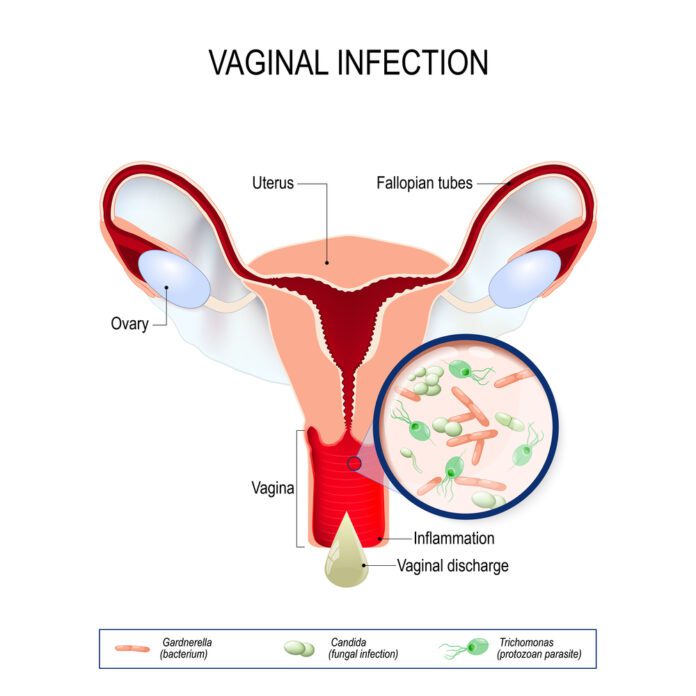Overview Of Vaginal Yeast Infections
Vaginal yeast infection is an contamination in the vagina. The fungus Candida albicans is the most frequent cause of this.
Commonly Associated With
Monilial vaginitis; Vaginal candidiasis; Yeast infection in the vagina
Causes Of Vaginal Yeast Infections
Women commonly contract a vaginal yeast infection at least once. Candida albicans is a standard fungus, and usually appears in minor quantities in the mouth, skin, digestive tract, and vagina.
Other common vaginal germs usually cancel out the danger of infection from candida albicans. However, candida albicans can outgrow them. This then causes a yeast infection. This can then cause a yeast infection.
This can happen if you are:
- Obese
- Living with diabetes
- Pregnant
- Treating a different infection with antibiotics. Because, these can alter vaginal germ levels.
Sexual intercourse does not spread a yeast infection. Although, men may show symptoms of this after having sex with a contaminated partner. Symptoms include irritation, rash, or itching on their penis.
Multiple vaginal yeast infections can be a precursor to other health concerns. Although, different vaginal infections may be misidentified for this too.
Symptoms Of Vaginal Yeast Infections
Symptoms include:
- Atypical vaginal discharge. This can differ from chunky, white discharge to, to an almost water like consistency.
- Painful urination
- Itching and burning of the labia and vagina
- Painful intercourse
- Swelling and redness in the vulva, the skin on the outside of the vagina
- Painful intercourse
Exams & Tests For Vaginal Yeast Infections
When a health care provider does a pelvic exam, it can show:
- Swelling and redness of the skin of the vulva, in the vagina, and on the cervix
- Dry, white spots on the vaginal wall
- Cracks in the skin of the vulva
- A small amount of the vaginal discharge is examined using a microscope. This is called a wet mount and KOH test.
Sometimes, a culture is taken if:
- A past infection returns
- The infected area does not improve from treatment
- A provider may conduct other tests to determine the start of your symptoms.
Treatment Of Vaginal Yeast Infections
Medication for a vaginal yeast infection can be oral tablets, vaginal tablets or suppositories, ointments, or creams oral tablets, vaginal tablets or suppositories, ointments, or creams. Generally, these medicines can be bought without seeking a provider’s approval.
When treating yourself at home it is alright if:
You are not pregnant
If sexually transmitted infections (STI) from recent sexual contact are not of your concern
This is not your first yeast infection, also if you have not had recurring yeast infections
You have light symptoms and have no fever or pelvic pain
Medicine you can buy to treat a vaginal yeast infection:
- Butoconazole
- Clotrimazole
- Miconazole
- Tioconazole
When using these medicines:
- Your doctor can also prescribe a pill that you only take by mouth once.
Carefully read directions for consumption.
Use the medicine for 1 to 7 days, as directed. And if you do not get constant infection, 1-day medicine may work effectively.
If your symptoms get better, do not stop medication, and use it for its recommended time.
Your provider may also prescribe one-time medicine taken by mouth.
If your symptoms are worse or you get vaginal yeast infections often, you may need:
- Medicine that works up to 14 days
- Also, use a fluconazole pill, Azole, or other vaginal cream every week to stop new infections
To Help Prevent and Treat Vaginal Discharge:
- Keep your genital area clean and dry. Also, only rinse with water and do not use soap. Sitting in a warm, but not hot, the bath may help your symptoms.
- Avoid douching. Although some women more clean from douching after sex or their period, it may worsen vaginal discharge. Douching removes healthy bacteria lining the vagina that protect against infection.
- Eat yogurt with live cultures or take Lactobacillus acidophilus tablets when you are on antibiotics. This is important because it can help to prevent a yeast infection.
- Use condoms because this helps avoid spreading of an infection.
- Avoid using powders, fragrances, or feminine hygiene sprays in the genital area. This is because these products can cause irritation.
- Avoid wearing tight-fitted pants or shorts. These can then cause irritation and sweating.
- Wear cotton underwear or cotton-crotch pantyhose. Avoid silk or nylon underwear. These can then increase sweating in the genital area. This issue then leads to the growth of more yeast.
- Aim to control your blood sugar level under good control if you have diabetes. This is because regulating blood sugar sustains balanced function in the body.
- Aim to avoid wearing wet bathing suits or exercise clothing for long periods of time, because wet areas promotes the growth of infection. Wash sweaty or wet clothes after each use.



